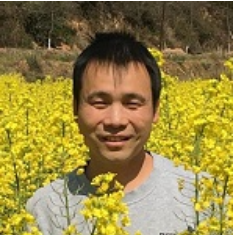New Perspectives on Entomopathogenic and Nematode-Trapping Fungi
A special issue of Journal of Fungi (ISSN 2309-608X). This special issue belongs to the section "Fungi in Agriculture and Biotechnology".
Deadline for manuscript submissions: closed (30 June 2023) | Viewed by 14684
Special Issue Editors
Interests: nematophagous fungi; fungal genetics; fungus–nematode interaction; signal transduction; fungal morphogenesis; fungal pathogenicity and development
Special Issues, Collections and Topics in MDPI journals
Interests: fungal metabolism; nematode-trapping fungi; fungus–host interaction
Special Issues, Collections and Topics in MDPI journals
Special Issue Information
Dear Colleagues,
A large number of filamentous fungi are of agricultural importance, including the causal agents and biological control agents of arthropod and nematode pests. In recent decades, scientists have been interested in developing environmentally friendly biological control agents to control the population of crop pests. Entomopathogenic and nematode-trapping fungi play important roles in the natural control of host populations and have been widely applied for biological control of pest insects and nematodes. With the development of sequencing technology, multi-omics, including genomic, proteomic, transcriptomic, and metabolomic analyses, has been widely used to elucidate the molecular mechanisms that underlie fungus–host interactions to develop new programs and strategies for combating arthropod and nematode pests.
This Special Issue of the Journal of Fungi welcomes all kind of reviews, perspectives, and research articles on the topic of “New Perspectives on Entomopathogenic and Nematode-Trapping Fungi” to expand our understanding of fungus–host interactions.
Prof. Dr. Jinkui Yang
Prof. Dr. Xuemei Niu
Guest Editors
Manuscript Submission Information
Manuscripts should be submitted online at www.mdpi.com by registering and logging in to this website. Once you are registered, click here to go to the submission form. Manuscripts can be submitted until the deadline. All submissions that pass pre-check are peer-reviewed. Accepted papers will be published continuously in the journal (as soon as accepted) and will be listed together on the special issue website. Research articles, review articles as well as short communications are invited. For planned papers, a title and short abstract (about 100 words) can be sent to the Editorial Office for announcement on this website.
Submitted manuscripts should not have been published previously, nor be under consideration for publication elsewhere (except conference proceedings papers). All manuscripts are thoroughly refereed through a single-blind peer-review process. A guide for authors and other relevant information for submission of manuscripts is available on the Instructions for Authors page. Journal of Fungi is an international peer-reviewed open access monthly journal published by MDPI.
Please visit the Instructions for Authors page before submitting a manuscript. The Article Processing Charge (APC) for publication in this open access journal is 2600 CHF (Swiss Francs). Submitted papers should be well formatted and use good English. Authors may use MDPI's English editing service prior to publication or during author revisions.
Keywords
- entomopathogenic fungi
- nematode-trapping fungi
- fungus–host interaction
- fungal pathogenicity
- fungal metabolism
- biological control







